Hollyhock from Seeds |
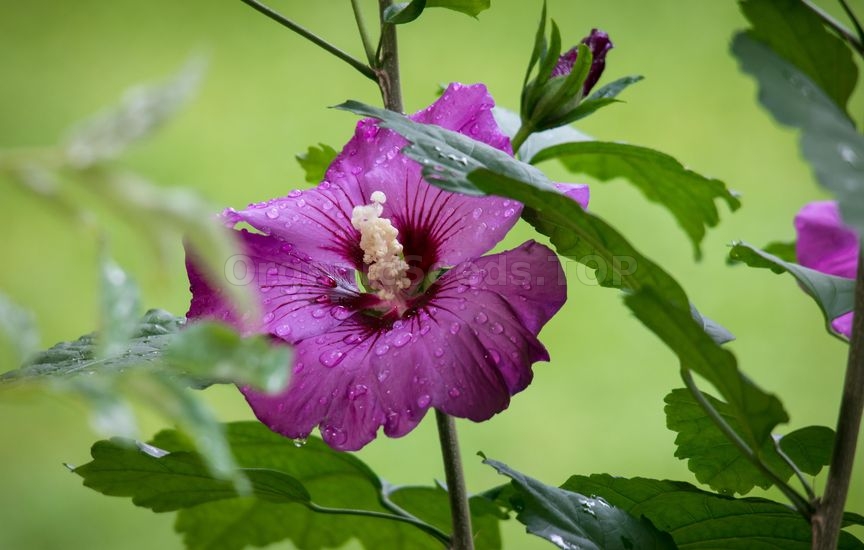 The alcea rosea is, with its luminous colors and beautiful flowers, a valued asset for every garden. The real eye-catcher of the hollyhock is its height. The flower attracts attention with its huge blossoms which shine in several bright colors. It is also known as common peony or common mallow. It also emphasizes the beauty of any accompanying plant in your summer flower bed. By adhering to this cultivation and care instruction you will have an idea of what to take special care of. Plant Profile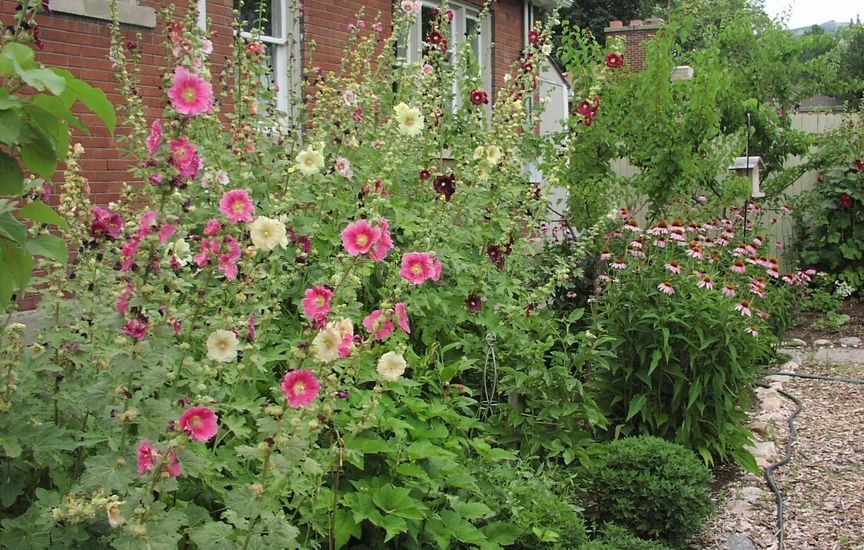
It rises into the sky like a candle. The bowl-shaped leafs of the flower are leaving a fantastic impression. It is especially beautiful to look at in a farmer’s garden. The annual or biennial hardy hollyhock impresses just as much as an individual plant. Its flowering period stretches until September. The alcea rosea starts out as a tiny plant with deep-green leaves and can grow until up to two meters. It will shine the brightest once its blossoms burst open.  The origin of the hollyhock flower lies in eastern and southern Europe as well as the middle and far-eastern region. Its genus was first published in the year 1753 by Carl von Linné in the species plantarum. Albert Spear Hitchcock and Jesse Robinson Green determined the alcea rosea as a Lectotypus in the year 1929 in the standard-species of Linnaean genera of phaneograms. Some species are being cultivated in subtropical areas and environments with a moderate climate. The distinction is often unclear. Due to this it is possible that other cultivated species are being listed as alcea rosea. Care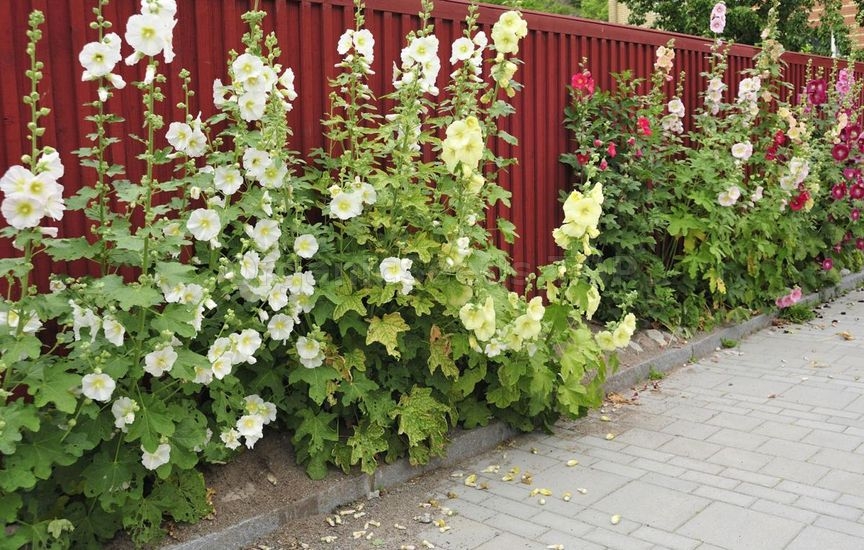 The magnificent flower is relatively undemanding. As a biennial plant it grows its glorious blossoms in the second year. Fulfill your desire of beautiful flowers by abiding this care instruction.
Location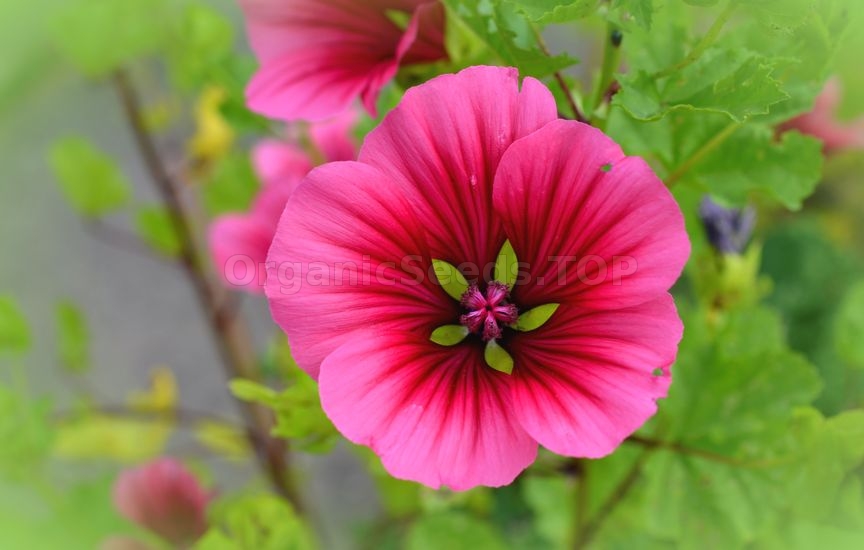 In order to grow high and healthy the flower prefers a location with plenty of exposure to the sunlight. It also gets used to semi-shady spots. The flower furthermore prefers spots that protect it from wind. Due to its height it requires a safe location. Plants that grow especially tall should be fixated. Hollyhocks are growing lavishly and with full blossoms if you place them on the south side of flower beds or on house walls.
Soil conditions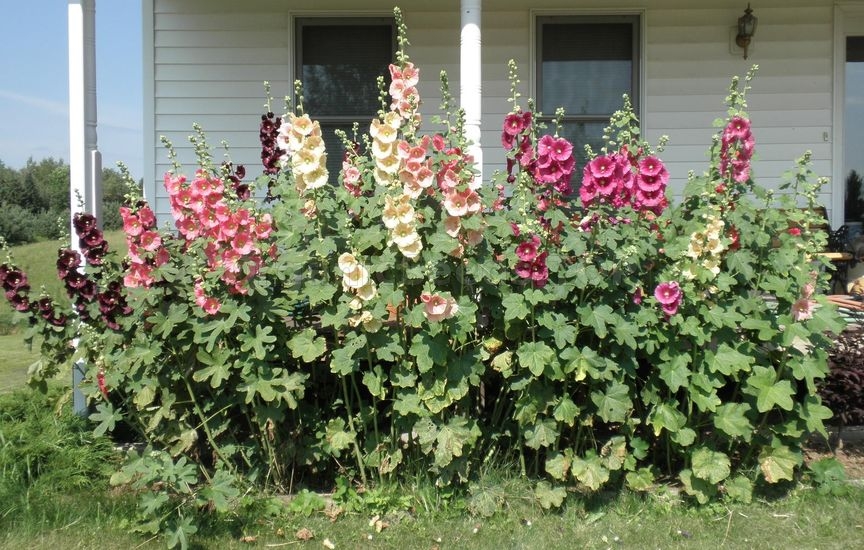 The impressive plants prefer the following soil conditions:
Place them in a spot where the soil does not dry out too heavily. By adding mulch to the soil you can prevent the soil from getting too hard. The mulch furthermore keeps all of the nutrients in the soil. Make sure to water regularly however avoid water logging which is pernicious to the proper development of the blossoms. Substrate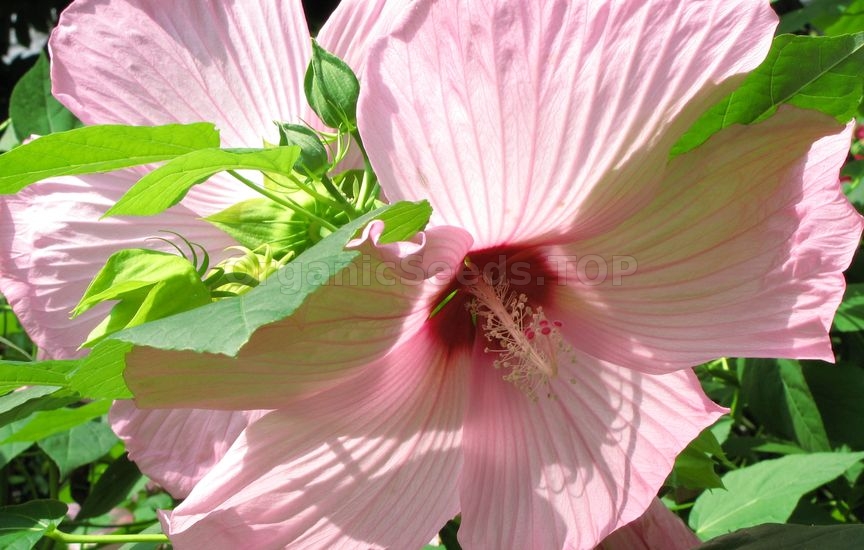 Almost every kind of soil is suitable for you to plant the hollyhock yourself. Try to pick soil with added mold. You can also add the mold by adding compost or potting soil. As a substrate, commercially sold potting soil will be just fine. Occasional watering of the plant with pond water complements the nutrients. Nitrogen is very good for the plant.
Planting The planting time of the hollyhock stretches from spring to fall. By the time your plants have grown in your garden you can easily multiply them. When they finished blossoming simply let the inflorescences stay and dry out. Rub open the inflorescences with your hands and distribute the seeds into the bed and work them into the soil.
Until spring, several tiny hollyhocks will grow which can then be separated as desired. The multiplication of the common hollyhock will thus cause little problems for the gardener. Plants in the bed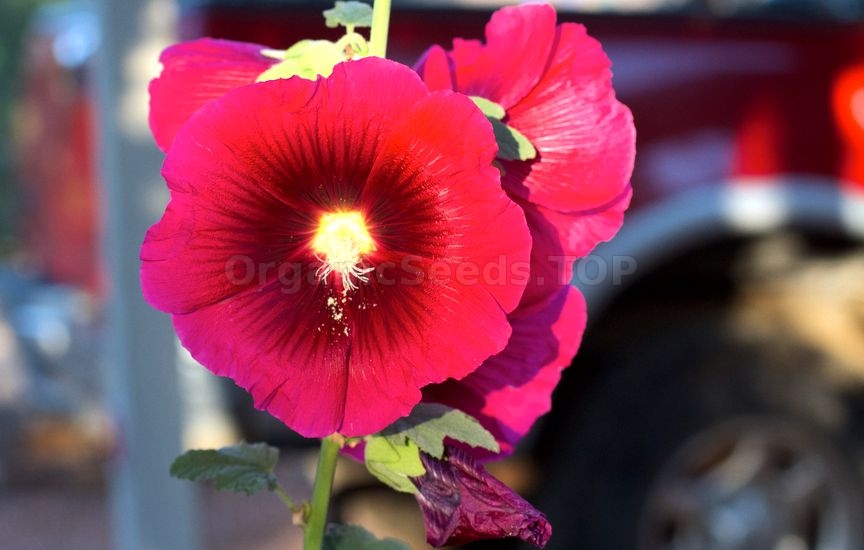 If you would like to plant hollyhocks on your own, it is recommended to do so in spring. Even though the alcea rosea does not have a lot of soil requirements, you should nevertheless thoroughly prepare the soil. Included in this is the process of digging up the shrub bed in which the hollyhock will be placed. It suffices to loosen the ground and aerate the soil. Hollyhocks grow tap roots which aim to slightly enter the ground. You should remove wild herbs, dried roots and stones.
Add simultaneously compost and potting soil and furthermore add some gravel in order to develop a fine crumbled, loose soil layer before the time of planting. The distance between the plants depends on the expected height. A distance of at least 50 cm is ideal. Larger plants should be placed alone. 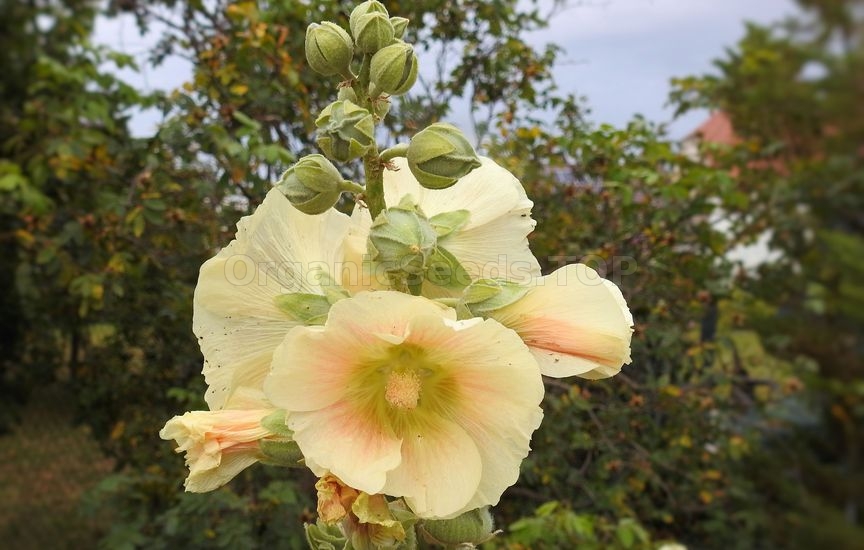 Following is an instruction to properly plant the flower:
Do not press on the soil too firmly. You can use stale water to flower the plant. Placing horn shavings on the location of the plant keeps the soil loose Pot planting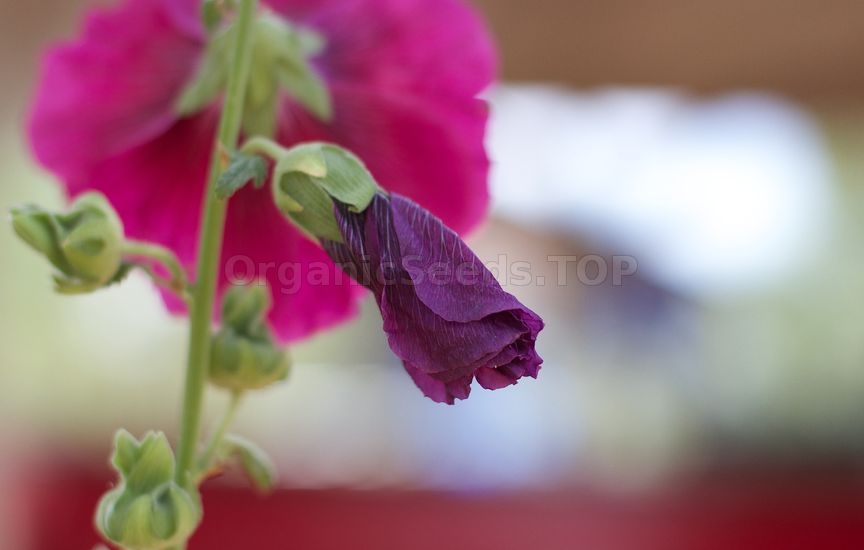 When planting in a planter you should make sure that the planter is big enough. Due to its large growth you should only plant one hollyhock per planter. Regarding proper drainage, place some clay shards on the openings of the bottom of the plant. There should be enough space for a trellis in your pot or flower basket.
Pull the trellis out once the plant has grown approximately one meter in height. Keep in mind that the hollyhock grows its blossoms in the second year. Watering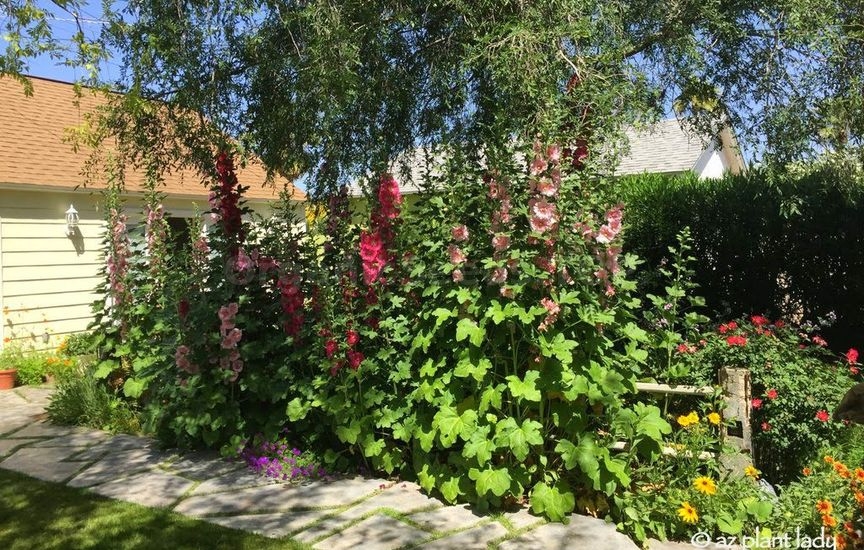 The hollyhock does not thrive in dry soils. In warm and dry summer months it requires daily watering. In order not to harm the big blossoms you should water the plant through the bottom. Always regard and take care of proper drainage so that the shrub is not being water logged. If your alcea rosea is in a pot you should wait ten minutes until the water is drained through the soil and the trivet. Drain the water. Water before the outer surface gets dry.
Cutting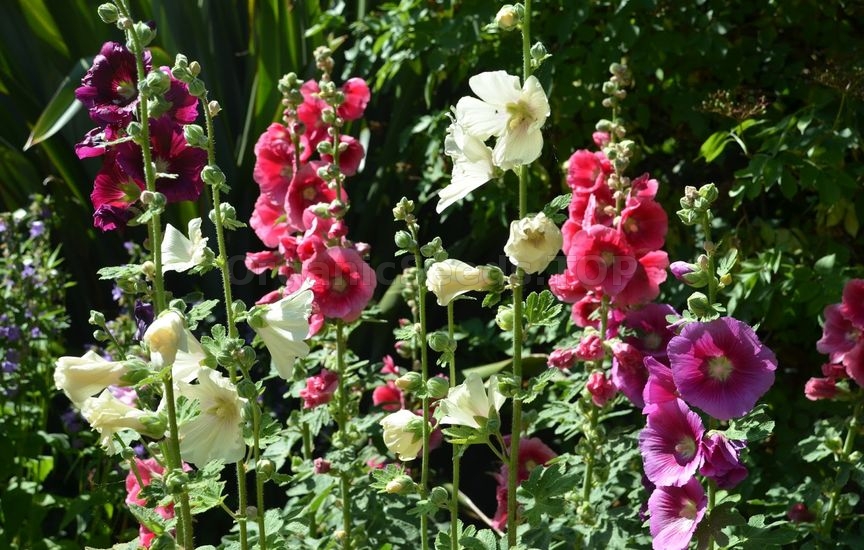 You can cut back the hollyhock directly after flowering. This will practically result in an increased lifespan of the plant as the hollyhock will blossom with several new blossoms and even more lavishly. The flowering period ends in September or October.
 Of utmost importance is the usage of a sharp knife or sharp garden shears. Unclean cuts with improper tools could result in damages to the plant. This weakens the plant. Recommended is thus the usage of loppers and rose shears. If you would like to avoid excessive seeding you should remove dry inflorescences.
Hibernation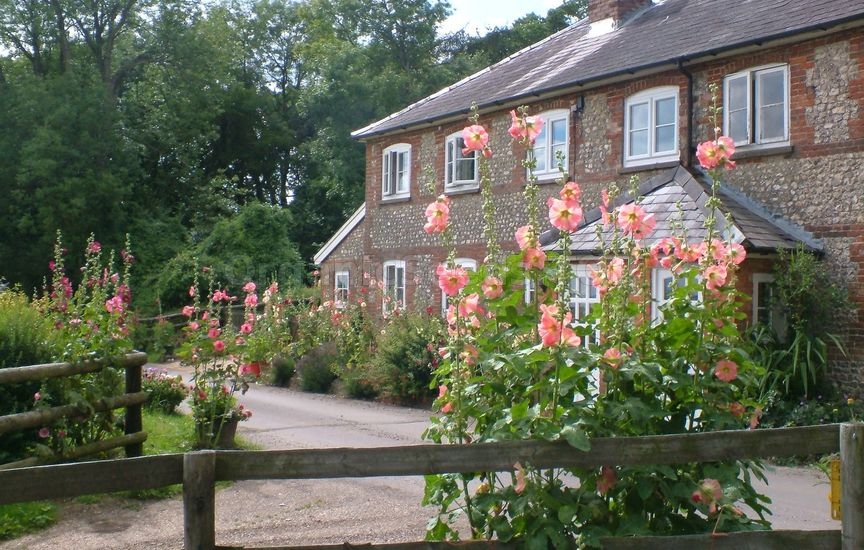 With ordinary winter conditions in central Europe you do not have to affect any special measures for winter storage of your hollyhocks. The alcea rosea easily withstands frost and snow. Due to this the hollyhock can easily hibernate in the garden or the shrub bed. Even younger hollyhocks are easily surviving colder months of winter. 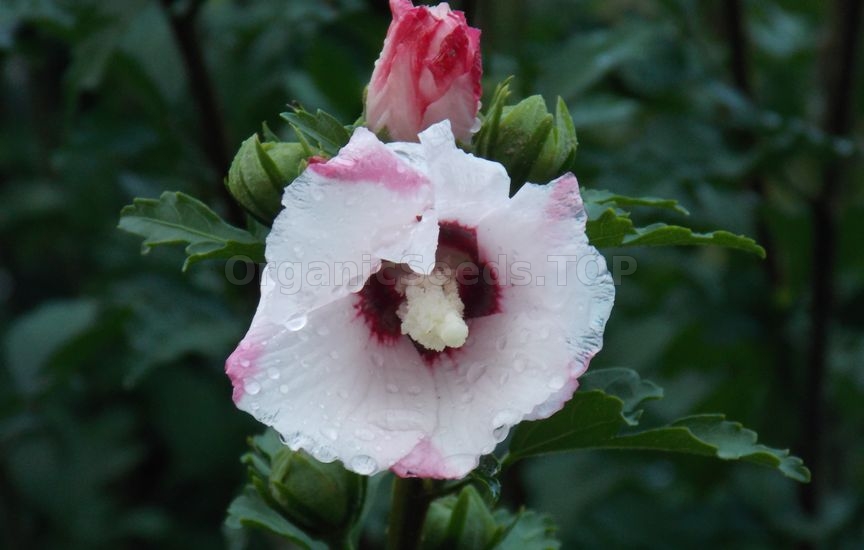 Take special care of your hollyhocks in a bucket. The planter has to be able to withstand cold weather and be frost-resistant. Do not let the bale of your perennial dry out during the winter. If the temperature lies constantly above 0 degrees Celsius you should regularly water the plant. Cover younger plants that have been cultivated indoors during the fall with sticks. This protects and shelters them from cold temperatures. You may need:«The Bride» - Organic Hollyhock Seeds«Crystal Mix» - Organic Hollyhock Seeds«Pinkish» - Organic Hollyhock Seeds«Crystal Red» - Organic Hollyhock Seeds«Peaches 'n' Dreams» - Organic Hollyhock Seeds |
|
|
